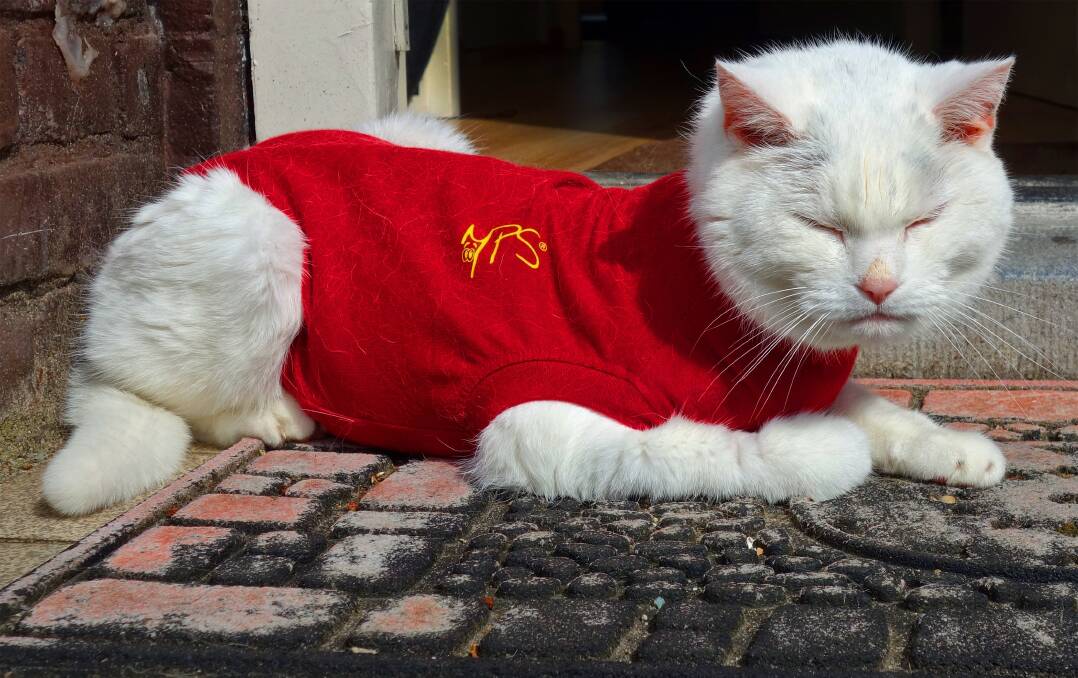YOUR PETS

It always comes as a bit of a shock, but the impending winter has announced itself with cold spells of late.
During the colder months, we humans modify our behaviour to keep ourselves warm by adding layers of clothing, spending more time indoors, sipping hot drinks, turning on the heating, and avoiding wind and rain as much as possible.
We modify the times we undertake activities like outdoor exercise, and those with conditions like arthritis may need additional pain relief.
Just like us, animals are vulnerable to hypothermia in cold weather. But our animal companions aren't able to adapt to the cold without our help.
They rely on us to ensure they have a warm, draught-free, dry environment, and when it's cold outside, they are able to toilet and exercise regularly.
Companion animals often position themselves in front of - if not on top of - artificial heat sources like electric blankets, hot water bottles, fireplaces and heaters.
My own cat Hero cannot be trusted alone with the heater. If left to his own devices, he will sleep in direct contact with it.
It is not uncommon for animals to overheat, or acquire burns due to contact with surfaces that become very hot. These burns may be severe and could even require surgery.
It is important that animals are supervised in the presence of artificial heat sources, and that they are monitored carefully and moved away if they get too hot.
An easy way to keep animals warm is to provide them with comfortable, soft bedding placed a safe distance from artificial heat sources.
Animals should not be left with artificial heat sources such as hot water bottles, heat pads or electric blankets in their bed overnight as these can cause burns.
Similarly, while there can be a temptation to dress dogs in thick clothing before taking them for a walk, they can easily overheat, especially with exertion.
I commonly see dog owners walking large, double-coated dogs in the full winter sunlight wearing heavy jumpers. While it may look cute, these outfits are not helping - and likely causing discomfort.
Animals wearing clothing should be monitored, and clothing removed if they show signs of overheating including panting. Clothing should be fitted so that animals can move about freely, and toilet without soiling the clothing.
Animals that are housed out of doors should have access to a warm, clean, dry shelter that protects them from the elements. This includes animals kept in hutches, such as rabbits or guinea pigs. The provision of ample nesting and bedding material (for example, clean, dry straw) helps them regulate their temperature. Moving hutches into a well-ventilated indoor area, where possible, may help keep animals warm.
It is often during the colder months that owners report animals with osteoarthritis seem stiffer, sorer, more likely to limp, or be less willing to move around. These are all potential signs that an animal may be in pain. There are many effective treatments now available for osteoarthritis pain. Your veterinarian will recommend these on the basis of physical examination findings, as well as additional tests. This may include blood and urine tests (to ensure the absence of disease which might exclude treatment with certain medications) and x-rays to rule out other causes of musculoskeletal pain.
Medication, combined with gentle, regular exercise where appropriate, can really improve an animal's quality of life.
- Dr Anne Quain is a lecturer at the Sydney School of Veterinary Science and a practising veterinarian.

